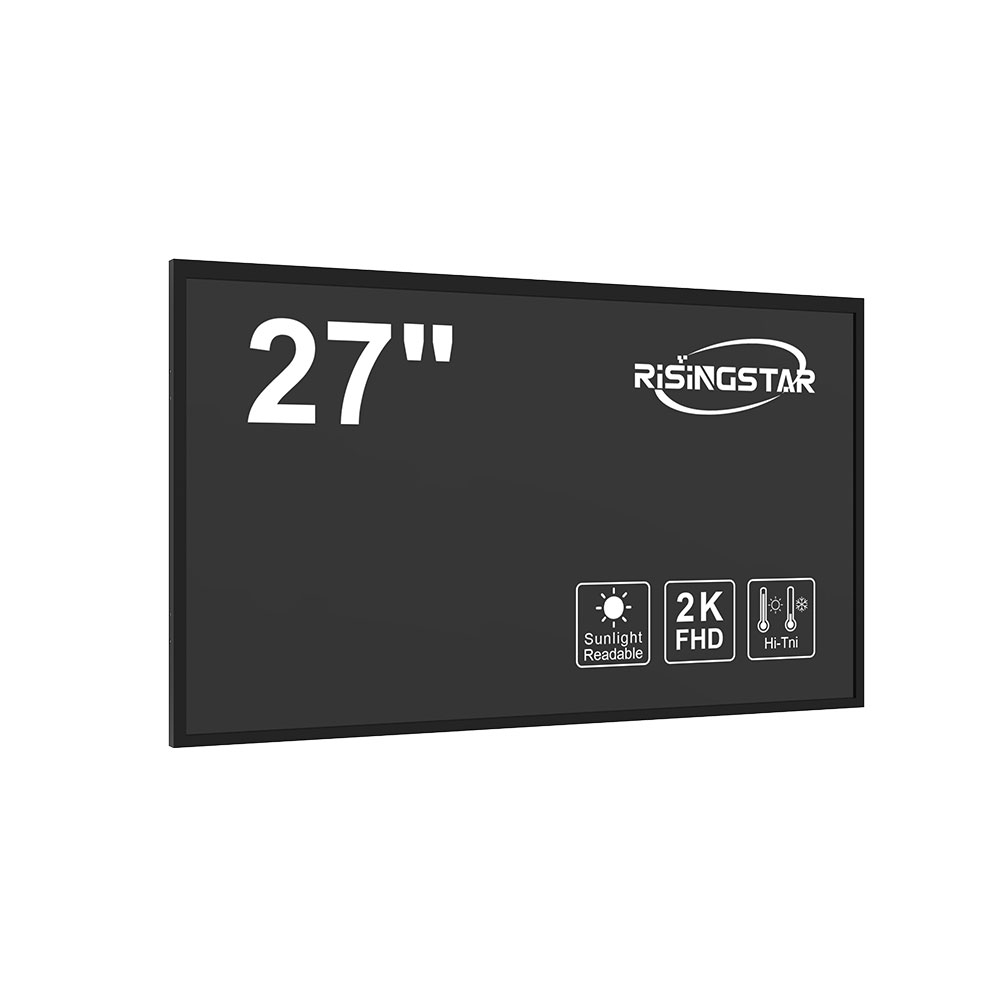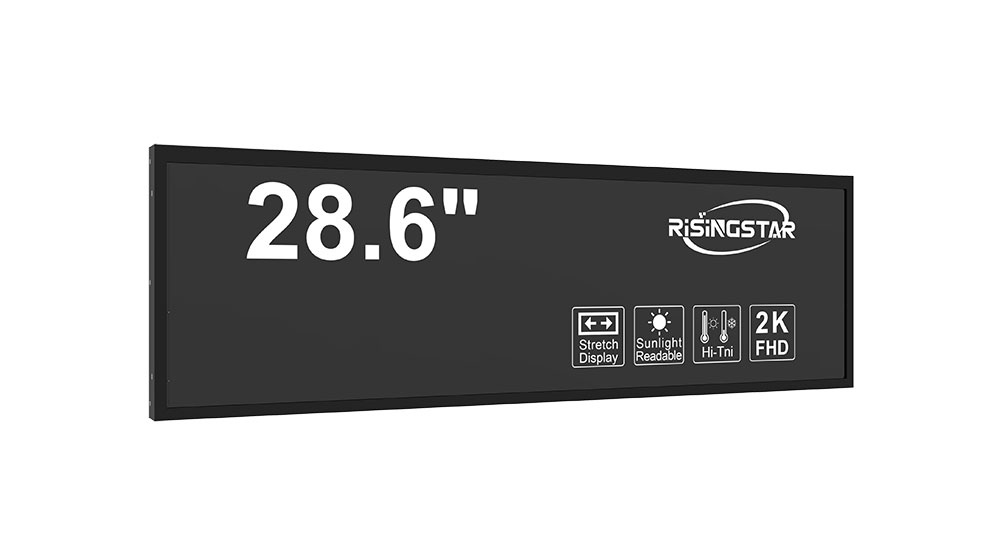- Home
- About Us
- Products
- News
- Video
- Contact
- Send Inquiry
Search
- Home
- About Us
- Products
- News
- Video
- Contact
- Send Inquiry

High-brightness sunlight-readable LCD (Liquid Crystal Display) screens are a critical innovation in modern display technology, particularly for applications where visibility under direct sunlight is non-negotiable. Unlike standard LCDs that suffer from poor contrast and washout in bright environments, these specialized displays maintain clarity, color accuracy, and readability even in extreme lighting conditions—ranging from midday sun to high-altitude exposure. Their use spans across military command centers, outdoor industrial machinery, aviation cockpits, marine navigation systems, and public transportation interfaces, making them indispensable in mission-critical environments.
The foundation of high-brightness sunlight-readable LCDs lies in advanced optical design, materials engineering, and power-efficient backlighting. These displays typically achieve brightness levels between 5,000 and 10,000 nits (cd/m²), far exceeding the 200–400 nits of consumer-grade screens. For context, sunlight at sea level can reach up to 10,000 lux, which equates to approximately 10,000 nits in luminance terms—a benchmark that drives the need for such robust display solutions. The U.S. Department of Defense’s MIL-STD-810G standard and the European EN 60950-1 certification often mandate brightness thresholds above 3,000 nits for devices used in field operations, underscoring their operational necessity.

One of the most significant technological breakthroughs enabling this performance is the integration of transflective liquid crystal layers. Traditional transmissive LCDs rely entirely on internal backlighting, which becomes ineffective when ambient light exceeds the screen’s emitted brightness. Transflective panels, however, combine both reflective and transmissive modes: they utilize ambient light in daylight (via micro-mirrors embedded in the display structure) while switching to full backlighting in low-light conditions. This dual-mode operation not only conserves energy but also ensures consistent visibility regardless of environmental lighting. According to a 2023 report by Display Supply Chain Consultants (DSCC), transflective technology now accounts for over 65% of all new military-grade LCD shipments due to its superior performance-to-power ratio.
Another key component is the use of high-efficiency LED backlights, often RGB (Red-Green-Blue) or white LEDs with proprietary diffuser films. These backlights must be precisely calibrated to avoid hotspots or uneven illumination—an issue known as "non-uniformity" that can distort image quality. Leading manufacturers like Sharp, LG Display, and BOE have developed multi-layered diffusers with nano-patterned structures that scatter light uniformly across the panel. Additionally, some designs incorporate adaptive brightness control algorithms powered by ambient light sensors (ALS). These sensors automatically adjust the backlight intensity based on real-time environmental light levels, reducing unnecessary power consumption while maintaining optimal readability—a crucial feature for battery-powered field equipment.

Durability is equally important. High-brightness sunlight-readable LCDs are engineered to withstand harsh operating conditions such as temperature extremes (-40°C to +70°C), vibration, shock, and humidity. They often meet IP65 or higher ingress protection ratings, ensuring resistance to dust and water spray. In the aerospace sector, these screens comply with DO-160 standards for airborne equipment, including thermal cycling, altitude simulation, and electromagnetic interference (EMI) immunity. A case study from Honeywell’s aviation division showed that replacing older transmissive LCDs with high-brightness transflective models reduced pilot error rates by 27% during daytime operations, demonstrating tangible improvements in human-machine interface efficiency.
Manufacturing processes also play a vital role. Modern fabrication techniques involve atomic layer deposition (ALD) for thin-film transistor (TFT) gate insulators and precision photolithography to create sub-micron pixel patterns. These methods enhance response time (often below 10ms) and reduce motion blur—a critical factor in dynamic environments like vehicle dashboards or drone control interfaces. Furthermore, the adoption of flexible OLED substrates in some premium models allows for curved displays that improve ergonomics without sacrificing sunlight readability. While OLEDs inherently offer deeper blacks and wider viewing angles, their lower brightness output compared to LCDs historically limited their use in sunlight-readability applications. However, recent innovations from Samsung Display and LG Electronics have pushed OLED brightness beyond 5,000 nits using perovskite-based emissive layers, positioning them as viable contenders in next-generation sunlight-readable displays.
From an economic perspective, the global market for high-brightness sunlight-readable LCDs was valued at approximately $3.2 billion in 2023, according to MarketsandMarkets, and is projected to grow at a CAGR of 6.8% through 2030. This growth is fueled by rising demand in defense, automotive, and smart infrastructure sectors. For example, the U.S. Army’s Integrated Visual Augmentation System (IVAS) program requires hundreds of thousands of ruggedized, sunlight-readable displays for augmented reality headsets, driving innovation in miniaturization and thermal management. Similarly, electric vehicle manufacturers like Tesla and BYD are integrating high-brightness touchscreens into dashboards to ensure driver safety in sunny climates—a move that aligns with ISO 16067-1 guidelines for vehicular electronic systems.

Despite their advantages, challenges remain. One persistent issue is cost—these displays can be two to three times more expensive than conventional ones due to specialized components and rigorous testing protocols. Another challenge is balancing brightness with power efficiency, especially in portable devices where battery life is paramount. Engineers at Texas Instruments and Renesas Semiconductor have addressed this by developing low-power drivers that dynamically adjust pixel voltage based on content complexity—a technique called “smart dimming.” Such optimizations help extend device runtime without compromising visual fidelity.
In conclusion, high-brightness sunlight-readable LCD technology represents a convergence of optical physics, material science, and system-level engineering. Its ability to deliver reliable performance in extreme environments has made it a cornerstone of modern industrial and military systems. As global trends shift toward autonomous vehicles, edge computing, and green energy infrastructure, the demand for robust, readable displays will only intensify. Continued R&D in quantum dot enhancements, AI-driven contrast optimization, and sustainable manufacturing practices promises to make these displays even more efficient, affordable, and accessible in the coming decade.